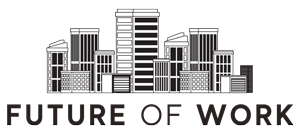IT leaders are increasingly supportive of merging HR and IT departments to address declining productivity and engagement in the workplace, according to research released by Nexthink. The report, titled The Experience Silo: The Future of HR and IT, surveyed 1,100 global IT leaders and reveals a growing belief that breaking down departmental silos could improve employee experience and operational outcomes.
According to the findings, 93% of respondents believe a merger would enhance productivity, engagement and satisfaction. Sixty-four percent expect this to happen within five years, while another 31% foresee closer collaboration even without a full organisational merger. The primary driver behind this outlook is the rising complexity of the digital workplace, which many leaders believe current organisational structures are unequipped to manage.
The study outlines several expected benefits of this integration. These include fewer delays in digital transformation projects, higher success rates for those initiatives, quicker adoption of digital tools, more efficient onboarding processes and improvements across productivity and employee satisfaction. IT leaders report that the average number of applications employees use has nearly doubled in recent years, rising from six in 2019 to 11 in 2024, with projections of a 43% increase in the next three years.
Vedant Sampath, Chief Technology Officer at Nexthink, said, “Virtually every business is facing this crisis of falling engagement and sluggish productivity, although some more than others. This shows that businesses are considering radical changes in response. This isn’t just about smoother onboarding or faster tech support; it’s about fundamentally reimagining the workspace in a way that allows employees to bring their best selves and produce their best work.”
Digital Workplace Complexity Fuels Demand for Organisational Change
The push for a structural shift comes amid growing dissatisfaction with the current workplace model. Global productivity losses tied to employee disengagement are estimated at $430 billion annually. Rising digital complexity is adding pressure. Employees are expected to navigate more tools and systems, yet they often lack adequate support from either HR or IT.
IT leaders surveyed identified several barriers to merging the two functions. The most common concern is a lack of clear ownership over shared responsibilities (58%). Poor communication between departments was cited by 50% and 49% pointed to differing departmental priorities. Despite these concerns, over half (52%) of leaders believe their organisations are very ready to begin merging the departments or significantly enhancing collaboration to drive digital transformation.
An emerging trend is the proposal of a new leadership role to oversee this combined function. Forty percent of respondents believe that neither the CIO nor the Chief People Officer should lead the joint department. Instead, they support the creation of a new executive role, such as Chief Experience Officer (CXO), to manage employee-facing technology and experience strategy holistically.
Employee Experience To Take Central Stage
The report outlines the anticipated remit of such a department, which goes beyond the traditional scope of IT or HR. Functions would include oversight of all workplace technology, including AI and automation tools (69%), management of digital training programmes (61%) and responsibility for workforce analytics such as productivity and engagement data (51%). Measurement and improvement of the digital employee experience would also fall under its control, cited by 62% of respondents.
Sampath added, “We’re moving towards a future where the employee experience is going to be just as important as the customer experience. Whether HR and IT merge or not, it’s essential that businesses invest in giving their workers great experiences. Nobody is able to be properly productive if they’re constantly battling delays, poorly functioning tools and disjointed processes. The businesses that address these frustrations and properly marry people and technology will be the ones that attract top talent, reduce friction and build high-performing, adaptive teams.”
The findings reflect a broader shift in how businesses are approaching workforce enablement. As digital demands grow and employee expectations evolve, leaders are being forced to reconsider long-standing organisational boundaries to improve agility, resilience and overall performance.






